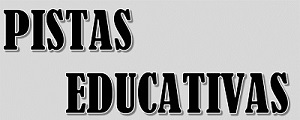EVALUACIÓN DE UTILIDAD DE LA APLICACIÓN “BONJOURCU” DE REALIDAD AUMENTADA PARA EL APOYO EN LA ENSEÑANZA DEL IDIOMA FRANCÉS (EVALUATION OF UTILITY OF AN AUGMENTED REALITY APPLICATION CALLED “BONJOURCU” TO SUPPORT FRENCH LANGUAGE TEACHING)
Resumen
Este estudio evalúa la utilidad de una aplicación de realidad aumentada en la enseñanza del francés, enfocándose en los beneficios y retos del uso de esta tecnología. Se examina su impacto en el aprendizaje del idioma a través de las opiniones de seis expertos de instituciones educativas en el norte del país. Estos especialistas valoran positivamente la facilidad de uso y el apoyo pedagógico que ofrece, especialmente como herramienta complementaria. Sin embargo, identifican áreas de mejora, incluyendo la necesidad de personalización para diversos niveles de dominio del idioma. La investigación destaca cómo la aplicación facilita la exposición de temas complejos, beneficiando tanto a docentes como a estudiantes en su proceso de enseñanza-aprendizaje. Este estudio busca justificar la adopción de tecnologías emergentes, subrayando la importancia de integrar herramientas innovadoras para enriquecer la educación del francés y cubrir las necesidades educativas contemporáneas.
Palabras Clave: Aplicación móvil, Aprendizaje, Enseñanza, Idioma Francés, Realidad aumentada.
Abstract
This study evaluates the usefulness of an augmented reality application in teaching French, focusing on the benefits and challenges of using this technology. The impact on language learning is examined through the opinions of six experts from educational institutions in the northern region of the country. These specialists highlight the ease of use and the pedagogical support the application provides, especially as a complementary tool. However, areas for improvement are identified, including the need for customization to suit different language proficiency levels. The research emphasizes how the application facilitates the presentation of complex topics, benefiting both teachers and students in the teaching-learning process. This study aims to justify the adoption of emerging technologies, stressing the importance of integrating innovative tools to enrich French education and meet contemporary educational needs.
Keywords: Augmented reality, French, Learning, Mobile app, Teaching.
Texto completo:
42-56 PDFReferencias
Campus Langues. CAMPUS LANGUES. Institu Privé (n. d.). [En línea]. Disponible en: https://campuslangues.com/es. [Último acceso: Noviembre 23, 2023].
Cervantes Gómez, J., & Gómez Fuentes, M. Taxonomía de los modelos y metodologías de desarrollo de software más utilizados. Universidades, 62(52), 37-47. Marzo, 2012.
ClassVR, “Virtual & augmented reality in languages,” ClassVR (n. d.). [En Línea]. Available: https://www.classvr.com/virtual-reality-in-education/virtual-augmented-reality-in-languages/. [último acceso: septiembre 17, 2024].
Comisión Nacional de los Derechos Humanos (CNDH), Día de la lengua francesa: Multilingüismo y diversidad cultural. Marzo, 2023. [Online]. Disponible: https://www.cndh.org.mx/noticia/dia-de-la-lengua-francesa-multilinguismo-y-diversidad-cultural. [Último acceso: Marzo 15, 2024].
France Education International, DELF-DALF Tout Public, France Education International (n. d). [En línea]. Disponible: https://www.france-education-international.fr/en/diplome/delf-tout-public?langue=en. [Último acceso: Febrero 20, 2024].
Ferreiro M., Practica y diviértete con las aplicaciones para aprender francés. Revista Digital INESEM [En línea]. Marzo, 2013. Disponible en: https://revistadigital.inesem.es/idiomas/aplicaciones-moviles-para-aprender-frances/. [Último acceso: Diciembre 9, 2023].
González Acosta, E. Acosta Pereira, E., Dechia Paiva, P. Aplicación móvil con realidad aumentada para traducir texto del español al guaraní. FPUNE Scientific, [S.l.], n. 17. ISSN 2313-4135. Mayo, 2023.
Inkscape, Inkscape (n. d). [En línea]. Disponible: https://inkscape.app/es/. [Último acceso: Marzo 17, 2024].
Martínez J., El color, una gama entrañable uso para el aprendizaje. Revista Educación Virtual. Septiembre 2016. [En línea]. Disponible: https://revistaeducacionvirtual.com/archives/2269. [Último acceso: 10 febrero 2024].
Mondly. Mondly VR. (n. d.) [En línea]. Disponible en: https://www.mondly.com/vr. [Último acceso: Diciembre 9, 2023].
Perry B., Gamifying French Language Learning: A Case Study Examining a Quest-based, Augmented Reality Mobile Learning-tool. Procedia - Social and Behavioral Sciences, vol. 174, pp. 2308-2315. Disponible en: https://doi.org/10.1016/j.sbspro.2015.01.892. Febrero, 2015.
Ramírez Martinell, A., Casillas Albarado, M. Ángel, y Contreras Asturias, C. C. La incorporación de las TIC a la enseñanza universitaria de los idiomas. Debate Universitario, 3(5), 125–140. Disponible: https://doi.org/10.59471/debate2014146, Noviembre, 2014.
Song C, Shin S-Y, Shin K-S. Optimizing Foreign Language Learning in Virtual Reality: A Comprehensive Theoretical Framework Based on Constructivism and Cognitive Load Theory (VR-CCL). Applied Sciences. 2023; 13(23):12557. https://doi.org/10.3390/app132312557.
Stein S., Google brings AR and Lens closer to the future of search. CNET. Mayo, 2019. [En línea]. Disponible en: https://www.cnet.com/tech/mobile/google-brings-ar-and-lens-closer-to-the-future-of-search-io/. [Último acceso: Noviembre 23, 2023].
URL de la licencia: https://creativecommons.org/licenses/by/3.0/deed.es

 Pistas Educativas está bajo la Licencia Creative Commons Atribución 3.0 No portada.
Pistas Educativas está bajo la Licencia Creative Commons Atribución 3.0 No portada. 
TECNOLÓGICO NACIONAL DE MÉXICO / INSTITUTO TECNOLÓGICO DE CELAYA
Antonio García Cubas Pte #600 esq. Av. Tecnológico, Celaya, Gto. México
Tel. 461 61 17575 Ext 5450 y 5146
pistaseducativas@itcelaya.edu.mx
